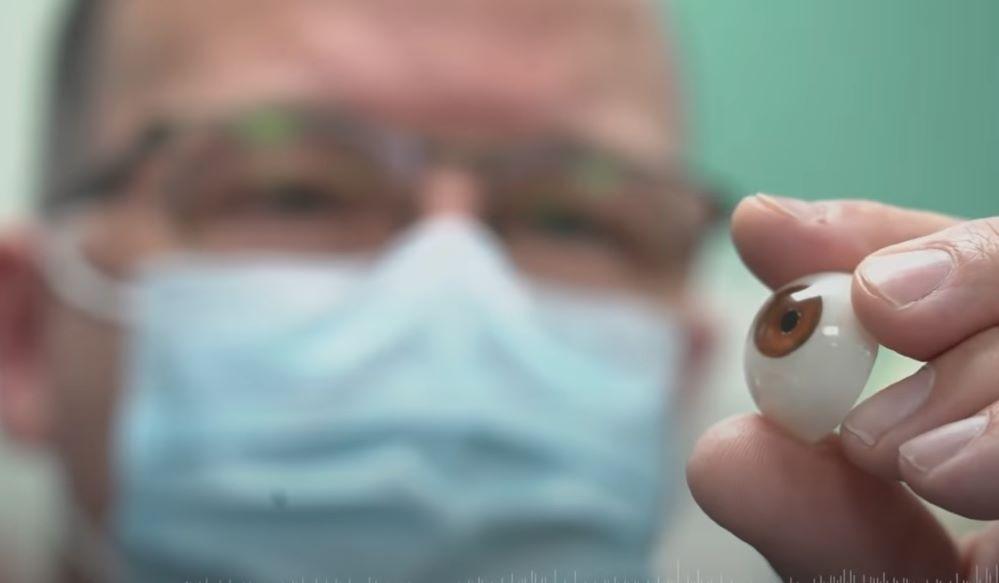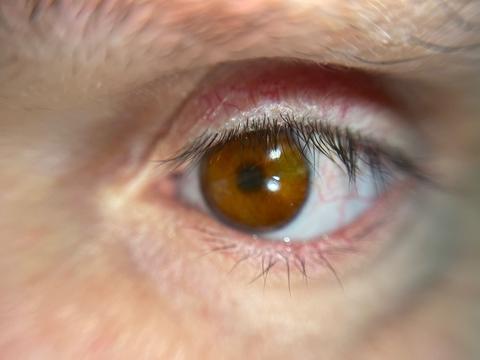- FMA
- The Fabricator
- FABTECH
- Canadian Metalworking
Our Publications
Categories
- Additive Manufacturing
- Aluminum Welding
- Arc Welding
- Assembly and Joining
- Automation and Robotics
- Bending and Forming
- Consumables
- Cutting and Weld Prep
- Electric Vehicles
- En Español
- Finishing
- Hydroforming
- Laser Cutting
- Laser Welding
- Machining
- Manufacturing Software
- Materials Handling
- Metals/Materials
- Oxyfuel Cutting
- Plasma Cutting
- Power Tools
- Punching and Other Holemaking
- Roll Forming
- Safety
- Sawing
- Shearing
- Shop Management
- Testing and Measuring
- Tube and Pipe Fabrication
- Tube and Pipe Production
- Waterjet Cutting
Industry Directory
Webcasts
Podcasts
FAB 40
Advertise
Subscribe
Account Login
Search
3D printing reduces time needed to produce eye protheses
Patient at U.K. hospital is first to receive an additively manufactured prosthetic eye
- December 2, 2021
- Article
- Additive Manufacturing

Additively manufactured prosthetic eyes can be produced in about half the time needed to hand-craft protheses.
Information for this report comes from news releases published by Moorfields Eye Hospital and Fraunhofer Institute for Computer Graphics Research IGD.
A patient at Moorfields Eye Hospital was fitted with a fully digital, 3D-printed prosthetic eye in late November. He is the first patient in the world to have a 3D-printed eye as his sole prosthesis, claims the London hospital.
An additively manufactured eye is more realistic-looking than acrylic models, and measuring the eye socket prior to 3D printing is less invasive. The AM production process is faster too. Traditional acrylic prosthetic eyes are hand-crafted and take about six weeks to complete.
With 3D printing, once a scan has been taken the prosthesis can be printed in about two and a half hours. It is then sent to an ocularist to finish, polish, and fit. The whole process takes two to three weeks.
“We are excited about the potential for this fully digital prosthetic eye,” said Prof. Mandeep Sagoo, a consulting ophthalmologist at Moorfields and a professor of ophthalmology at the hospital’s research center. “We hope the forthcoming clinical trial will provide us with robust evidence about the value of this new technology, showing what a difference it makes for patients. It clearly has the potential to reduce waiting lists.”
The patient, Steve Verze, who’s in his 40s, said, “I’ve needed a prosthetic eye since I was 20, and I’ve always felt self-conscious about it. When I leave my home, I often take a second glance in the mirror, and I’ve not liked what I’ve seen.
“This new eye looks fantastic, and, being based on 3D digital printing technology, it’s only going to be better and better.”
Prepping for Printing
Sagoo said Verze’s prosthesis is the culmination of four years of development by Moorfields, UCL Institute of Ophthalmology, Fraunhofer IGD, and Ocupeye Ltd.
Ocular prostheses are recommended when an eye has been surgically removed following a serious injury, for example, or when a patient is suffering from a life-threatening disease like eye cancer. Such conditions afflict more than 8 million people worldwide.
The method of measuring a patient’s eye socket and manufacturing a prosthesis has remained largely unchanged for decades. Taking an impression of the patient’s eye socket is a process that can be uncomfortable for adults and distressing for children.
Verze’s initial 3D prothesis appointment began with a 2.4-sec., noninvasive, nonionizing scan by a modified ophthalmic scanner. The scan of the eye socket and color-calibrated image of the healthy eye then were digitally transferred to Fraunhofer.
Next, Fraunhofer’s Cuttlefish: Eye software fashioned a 3D model from the data, which was sent to additive manufacturer FIT AG. The company printed the prosthetic eye on a multicolor, multimaterial 3D printer controlled by a Cuttlefish universal 3D printer driver.
Oversight, Looking Ahead
Every step of the new manufacturing procedure has been subjected to strict quality controls. For example, the Cuttlefish: Eye software was certified as a Class 1 medical device. And extensive biocompatibility tests were performed on the 3D printing materials before the U.K.’s medical regulatory agency issued its approval.
Forty patients will be fitted with 3D-printed ocular prostheses for the clinical trial. They will be examined several times by qualified clinical staff over the course of a year and report back on their experiences.
The trial is an important step toward helping the project partners meet their goal of establishing a global network of clinics and 3D printers to meet the needs of patients who could benefit from prosthetic eyes.
VIDEOAbout the Publication
- Podcasting
- Podcast:
- The Fabricator Podcast
- Published:
- 04/16/2024
- Running Time:
- 63:29
In this episode of The Fabricator Podcast, Caleb Chamberlain, co-founder and CEO of OSH Cut, discusses his company’s...
- Trending Articles
- Industry Events
16th Annual Safety Conference
- April 30 - May 1, 2024
- Elgin,
Pipe and Tube Conference
- May 21 - 22, 2024
- Omaha, NE
World-Class Roll Forming Workshop
- June 5 - 6, 2024
- Louisville, KY
Advanced Laser Application Workshop
- June 25 - 27, 2024
- Novi, MI




























